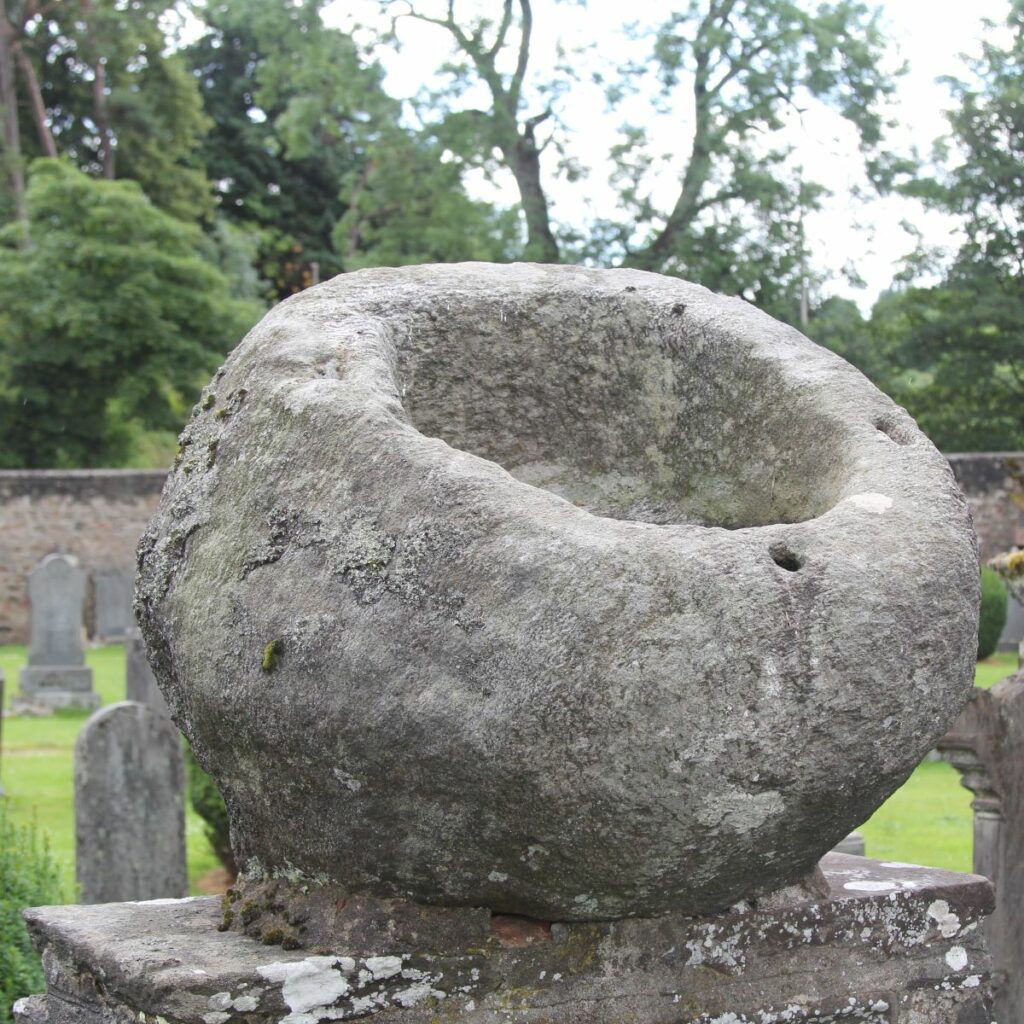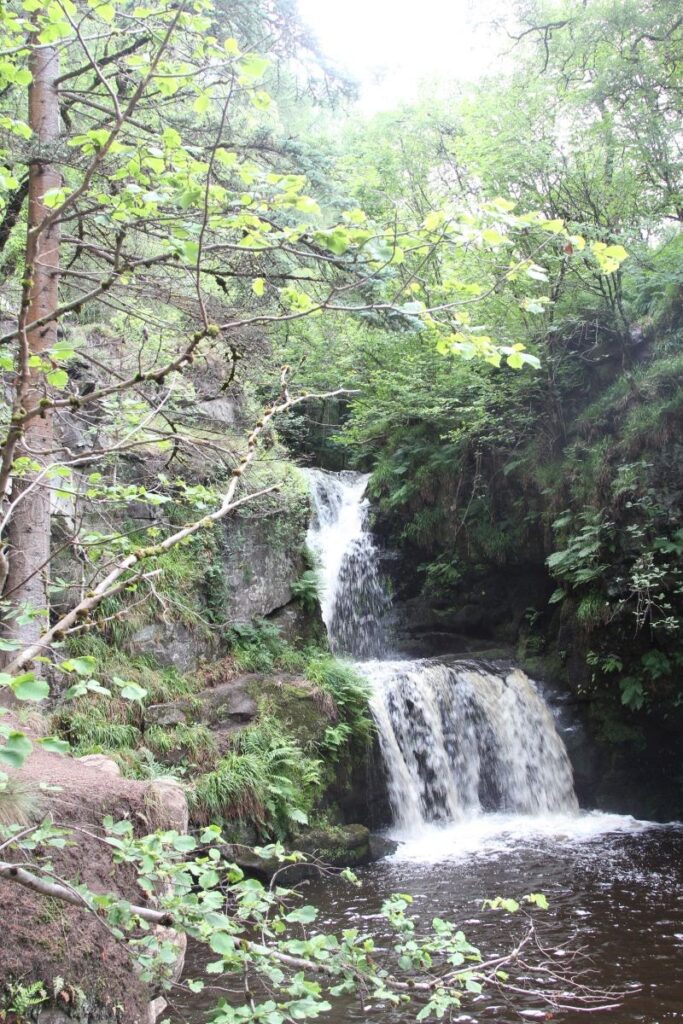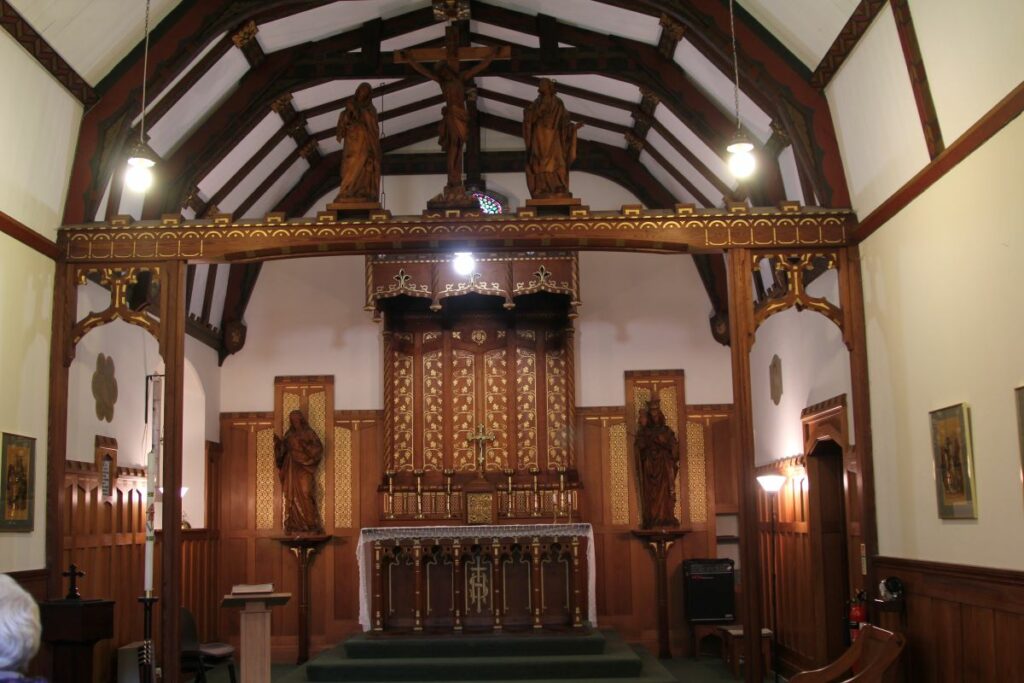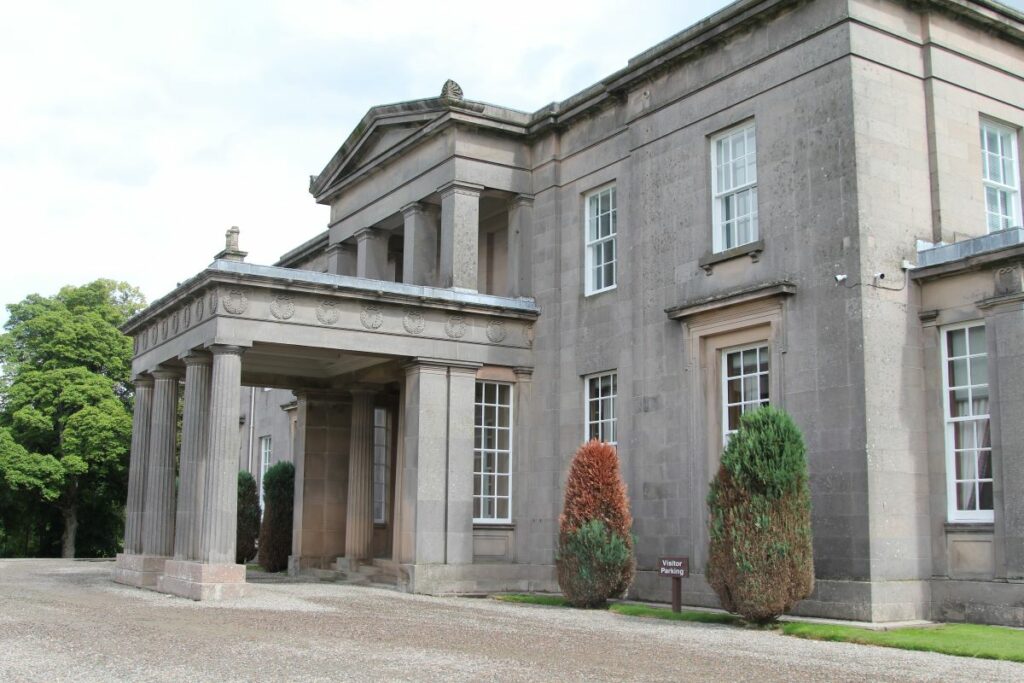Guided walk around Aberlour with Dr John Barrett
Saturday, 15th July
The weather forecast was dreadful, but even so 15 Club members gathered in the car park in Aberlour at 11.15 am to meet Dr John Barrett and Christine Clerke for a guided walk around Aberlour. After a brief introduction to the town – a planned town dating from 1812 – we set off for the churchyard, crossing the old railway line which served the town from 1863 until 1965. It was built by the Strathspey railway company, and later became part of the Great North of Scotland Railway.
At the centre of the graveyard are the scant remains of St Drostan’s Kirk. The original name of Aberlour, before the nineteenth century improvements , was Skirdustan, that is “the shire” of Dustan (or Drostan), an early British saint. The remains of the church are now covered in ivy. The other building standing in the churchyard is the mausoleum of the Grant family. John also drew our attention to an extraordinary large bowl or maybe mortar (as in pestle and mortar) sitting on a plinth. The purpose and age of this object is not known.
From the graveyard we returned to the footpath alongside the Aberlour Burn, which we followed up to the Falls Of Linn, stopping on the way to look at the old Pack Horse Bridge and the distillery. John gave us a short history of distilling in the area, which became legitimate after the 1823 Licensing Act. From there it was a pleasant walk through the trees to the Falls of Linn, which had plenty of water after recent heavy rain. Quite a steep climb followed to the top of the falls and a path through the woods to the beautiful little RC chapel of the Sacred Heart (1909); very simple on the outside, and fine wood carving inside.
The Aberlour Hotel provided a rest and a light lunch, before we set off along the High Street, where John explained the layout of the town created by Charles Grant of Wester Elchies in 1812(hence Charlestown of Aberlour). The houses on each side of the wide main street were uniform in size and design, fronting directly onto the street with substantial plots of land to the rear. The original houses were all single storey, and the original roof line can still be seen on some of the gable ends. At the top of Conval Drive is the clocktower, all that remains of Aberlour Orphanage, which was demolished in 1967. It was one of the biggest children’s homes in Scotland, covering a site of 21 acres. A short walk from the tower is St Margaret’s Episcopalian Church, built in 1879 to serve the orphanage. John had the keys, so we were able to admire the fine Arts and Crafts stone carving and stained glass of the interior. A little further on from the Church is Aberlour House, once the home of the Grant family, then the prep school for Gordonstoun and now the head office of Walker’s Shortbread. This is a very grand house, designed by William Robertson in 1838.
There was a short heavy shower as we made our way back to the High Street, but we were able to shelter in the trees, and the sun came out soon after so we were able to continue our walk back to the Square and the Parish Church, built in 1812 with a Norman style tower added by William Robertson. The main body of the church was destroyed by fire in 1861 and replaced in the Norman style; an apse and vestry in the same style were added in 1933.
The Parish Church was the final stop of what had been a very interesting and entertaining tour. Many thanks to John Barrett for sharing his knowledge of and enthusiasm for this very special town




